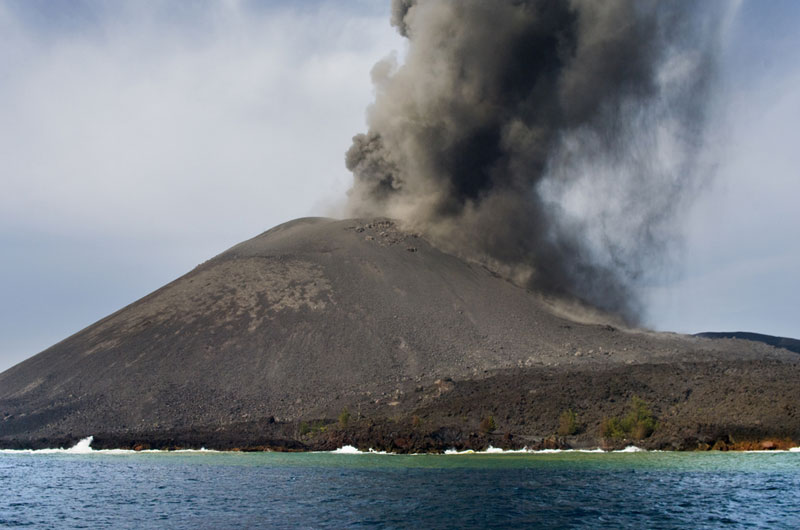New Suspect in 'Great Dying': Massive Prehistoric Coal Explosion

A great explosive burning of coal set fire and made molten by lava bubbling from the Earth's mantle , looking akin to Kuwait's giant oil fires but lasting anywhere from centuries to millennia, could have been the cause of the world's most-devastating mass extinction, new research suggests.
The event, called the Great Dying, occurred 250 million years ago, at the end of the Permian period. "The Great Dying was the biggest of all the mass extinctions," said study researcher Darcy Ogden of the Scripps Institution of Oceanography in San Diego. "Estimates suggest up to 96 percent of all marine species and 70 percent of all land species were lost."
Researchers still debate the cause of this mass-extinction event, implicating everything from asteroids to volcanic eruptions to a decrease of the oxygen in the atmosphere.
Coal combustion
Studies earlier this year found evidence of a compound called fly ash, one of the products of coal combustion, in rocks laid down right before this extinction event. The finding suggested a large amount of coal had combusted over a period of tens to thousands of years.
The researchers already knew a series of volcanic eruptions, which gave rise to a region of volcanic rock called the Siberian Traps, occurred around this time and covered up to 2.7 million square miles (7 million square kilometers) in lava. These lava floods, made of molten basalt rock, could have taken out the animals and plants directly in their paths. To have any global impact, however, the volcanic eruptions also would have needed to send airborne ash, soot and gases high into the atmosphere, the researchers noted.
Coal also seems to have been present in the area of the Siberian Traps, and the researchers thought that perhaps the lava burned up a large amount of coal and left the fly ash — but they weren't sure whether it was physically possible. They ran computer simulations of these processes and found evidence that a coal explosion could have been the cause of worldwide climate change and the Great Dying.
Sign up for the Live Science daily newsletter now
Get the world’s most fascinating discoveries delivered straight to your inbox.
Explosive extinction
These basalt floods could have mixed with the coal underground, then migrated up to the surface, where the mixture explosively lighted on fire when it mixed with oxygen in the air. [Image Gallery: Wild Volcanoes]
A blast that powerful "requires a very large amount of basalt to erupt over the surface in one place, and this place has to have large coal beds," Ogden said. "The Siberian Traps are a great candidate for this, since they are one of the biggest volcanic events in history and there is evidence to support the presence of coal in that region."
When this basalt-coal mixture reached the surface, it could have led to an explosive, fiery reaction similar to the giant oil fires set off by Iraqi forces in Kuwait in 1991. Volcanic emissions from the explosion would include carbon dioxide and methane, greenhouse gases that trap heat on Earth.
"The coal-basalt mixture comes out of the ground as a fluid, like oil, then ignites and combusts upon contact with the oxygen in the air," Odgen said. "The resulting soot, fly ash and gases are driven into the atmosphere in a large, dirty plume."
The study was published Dec. 19 in the journal Proceedings of the National Academy of Sciences.
You can follow LiveScience staff writer Jennifer Welsh on Twitter @microbelover. Follow LiveScience for the latest in science news and discoveries on Twitter @livescience and on Facebook.
Jennifer Welsh is a Connecticut-based science writer and editor and a regular contributor to Live Science. She also has several years of bench work in cancer research and anti-viral drug discovery under her belt. She has previously written for Science News, VerywellHealth, The Scientist, Discover Magazine, WIRED Science, and Business Insider.











